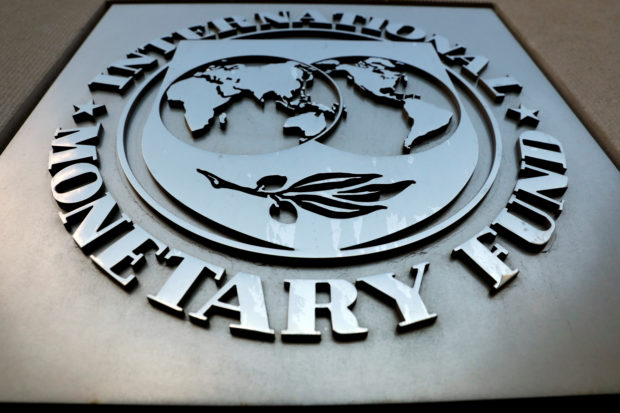
FILE PHOTO: The International Monetary Fund (IMF) logo is seen outside the headquarters building in Washington, U.S., September 4, 2018. REUTERS/Yuri Gripas
The Philippines’ economic prospects for the second half of the year looked dimmer mainly due to external shocks, even as the International Monetary Fund (IMF) upped its 2022 growth forecast to 6.7 percent.
In an email on Tuesday, IMF resident representative in the Philippines Ragnar Gudmundsson said the higher gross domestic product (GDP) growth projection for this year, from 6.5 percent previously, “reflected the strong recovery momentum in the first half of the year, which saw real GDP returning to its prepandemic level.”
First quarter GDP grew by a stronger-than-expected 8.3 percent, and Finance Secretary Benjamin Diokno had said the second quarter economic expansion was likely at double-digits or above 10 percent as the economy further reopened without a surge in COVID-19 infections.
However, President Marcos’ economic team had tempered their growth expectations for this year to 6.5-7.5 percent from 7-8 percent previously due to the prolonged Ukraine-Russia war, high consumer prices and interest rate hikes by central banks globally to rein in elevated inflation.
Gudmundsson shared the less optimistic outlook for the remainder of the year. “We expect this momentum to moderate in the second half of 2022 and in 2023, due to base effects, the impact of the war in Ukraine, slowdown in major trading partners, faster US monetary policy tightening and high inflation,” he said.
The IMF’s growth estimate for the Philippines for next year stood only at 5 percent, below the more ambitious 6.5-8 percent annual growth target of the Marcos administration from 2023 to 2028.
The IMF was nonetheless bullish for the medium term, especially if the current administration bats for more infrastructure and reforms.
Closing output gap
“The output gap is expected to close in 2024, with our medium term growth forecast settling at about 6.5 percent. A renewed infrastructure push and structural reforms leading to productivity gains could still accelerate this growth path,” Gudmundsson said.
In a July 26 report, UK-based think tank Capital Economics shared the same view that the pace of growth across emerging Asia, including the Philippines, would decelerate.
“With headwinds mounting, we expect growth to slow in the second half of the year and remain weak throughout 2023. Regional exports appear to have plateaued since the start of 2022 and are likely to drop back in the second half of the year as global economic growth slows. Meanwhile, elevated commodity prices and higher interest rates will weigh on consumption spending,” Capital Economics senior Asia economist Gareth Leather and research assistants Haman Hussein and Sophie Oudea said.
“Tighter monetary policy will also hold back growth. Over the past month, the central banks of South Korea, Malaysia, Pakistan, Sri Lanka, the Philippines and Singapore have tightened monetary policy. The main concern for policymakers is the rise in inflation, which has reached multi-year highs in a number of countries. We expect further rate hikes in most countries this year, but for tightening cycles to tail off in 2023 as growth slows and inflation drops back,” Capital Economics said.
In the case of the Philippines, Capital Economics said second quarter growth likely picked up from the first quarter, but “headwinds to the recovery are growing in the form of weaker global growth, high commodity prices and rising interest rates.”
“The slight uptick in the unemployment rate in May to 6 percent is a reminder that the recovery will not be plain sailing,” Capital Economics said. The state planning agency National Economic and Development Authority recently reported that only India had a higher jobless rate than the Philippines among emerging Asian economies, as available employment did not keep up with more Filipinos looking for jobs as the economic reopening came into full swing.

